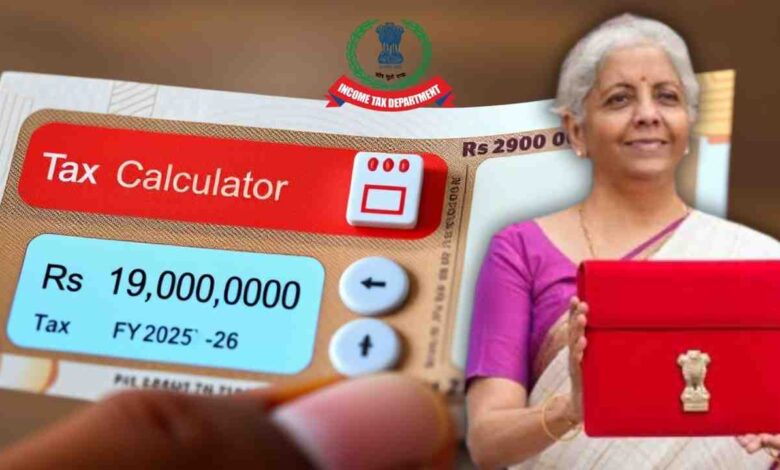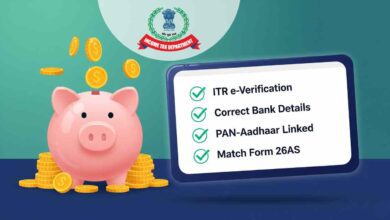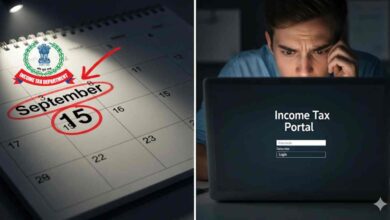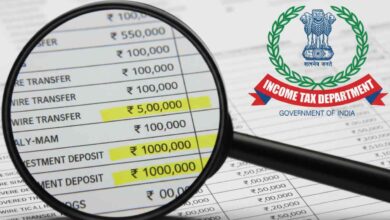Income Tax: Can Income Tax Be Zero Even on a Rs 19 Lakh Salary? Know the Truth

Income Tax: With the Financial Year 2025-26 (Assessment Year 2026-27) underway, significant changes to the income tax system, announced in Budget 2025, are now in effect. Many taxpayers are keen to understand their liabilities under these new rules, especially those with higher incomes. Some media articles claims that salary up to Rs. 19 lakh can be tax free. A persistent question is: can someone with an annual salary of Rs 19 lakh genuinely pay zero income tax? Let’s examine the current tax laws and the reality of this claim.
The New Tax Regime (FY 2025-26 / AY 2026-27): What’s in Force?
The New Tax Regime, which is the default option for taxpayers, incorporates the following for FY 2025-26:
- Standard Deduction: A Standard Deduction of Rs 75,000 is available for salaried individuals and pensioners.
- Tax Rebate (Section 87A): The rebate has been increased to Rs 60,000 for individuals with a taxable income of up to Rs 12,00,000. This effectively means no tax is payable if your taxable income is up to this limit. For salaried individuals, considering the standard deduction, this translates to nil tax liability for gross incomes up to Rs 12,75,000.
- Income Tax Slabs:
- Rs 0 to Rs 4,00,000: 0%
- Rs 4,00,001 to Rs 8,00,000: 5%
- Rs 8,00,001 to Rs 12,00,000: 10% (Tax rebate makes income up to Rs 12 lakh effectively tax-free)
- Rs 12,00,001 to Rs 16,00,000: 15%
- Rs 16,00,001 to Rs 20,00,000: 20%
- Rs 20,00,001 to Rs 24,00,000: 25%
- Above Rs 24,00,000: 30%
- (Additionally, a Health and Education Cess of 4% applies to the total tax amount.)
- Permissible Deductions: While most common deductions (like those under Sections 80C, 80D, HRA etc.) are unavailable in this regime, certain specific deductions are allowed. These include the employer’s contribution to the National Pension System (NPS) under Section 80CCD(2) and contributions to the Agniveer Corpus Fund under Section 80CCH (applicable only to Agniveers).
Analyzing the “Nil Tax on Rs 19 Lakh Salary” Claim Under Current Rules
Let’s calculate the tax liability for an individual earning a gross annual salary of Rs 19,00,000 in FY 2025-26:
- Gross Annual Salary: Rs 19,00,000
- Less: Standard Deduction: Rs 75,000
- Salary after Standard Deduction: Rs 18,25,000
- Less: Employer’s NPS Contribution (Section 80CCD(2)): Assuming an illustrative contribution of Rs 1,26,000 (e.g., 10% of a basic salary of Rs 12.6 lakh).
- Net Taxable Income: Rs 18,25,000 – Rs 1,26,000 = Rs 16,99,000
Applying the FY 2025-26 tax slabs to this Net Taxable Income:
- Up to Rs 4,00,000: Nil
- On the next Rs 4,00,000 (Rs 4,00,001 to Rs 8,00,000) @ 5%: Rs 20,000
- On the next Rs 4,00,000 (Rs 8,00,001 to Rs 12,00,000) @ 10%: Rs 40,000
- On the next Rs 4,00,000 (Rs 12,00,001 to Rs 16,00,000) @ 15%: Rs 60,000
- On the balance Rs 99,000 (Rs 16,00,001 to Rs 16,99,000) @ 20%: Rs 19,800
- Total Income Tax (before cess): Rs 20,000 + Rs 40,000 + Rs 60,000 + Rs 19,800 = Rs 1,39,800
The Section 87A tax rebate is not applicable here, as the taxable income (Rs 16,99,000) exceeds the Rs 12,00,000 threshold for the rebate.
- Add: Health and Education Cess @ 4% on Rs 1,39,800: Rs 5,592
- Total Tax Payable: Rs 1,39,800 + Rs 5,592 = Rs 1,45,392
Clearly, the tax liability is approximately Rs 1.45 lakh, not zero.
How Could ‘Nil’ Tax Be Possible Then?
Under the current FY 2025-26 rules, achieving zero tax on a Rs 19 lakh salary would require reducing the taxable income to Rs 12,00,000. After factoring in the Rs 75,000 Standard Deduction and an assumed Rs 1,26,000 employer NPS contribution, one would still need to claim additional deductions or have non-taxable income components amounting to roughly Rs 4,99,000. This would only be possible in very specific, uncommon circumstances, such as:
- A very large portion of the Cost to Company (CTC) being made up of reimbursements for actual expenses incurred wholly for official duties (which are not taxed as income).
- Applicability of substantial, specific deductions like those under Section 80CCH for Agniveers.
For the average salaried individual, these conditions are highly unlikely to be met.
Conclusion
The new income tax rules effective from April 1, 2025 (FY 2025-26) do offer considerable relief, particularly for those in the lower to middle-income brackets, with an effective tax-free income limit (including standard deduction) of Rs 12,75,000. However, for individuals earning a high salary, such as Rs 19 lakh, the notion of paying “nil” income tax is misleading under typical circumstances.
Key Advice for Taxpayers This Financial Year:
- Familiarize yourself with the current tax slabs and deductions applicable to your situation.
- Carefully review your salary structure to identify taxable components versus actual non-taxable reimbursements.
- Utilize the income tax department’s official tax calculator for an accurate assessment.
- If you have complex financial affairs or are unsure, consult a qualified tax advisor.
Staying informed and planning meticulously are crucial for managing your tax obligations effectively in the current financial year.




